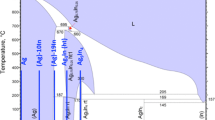Abstract
For the gate last approach of a high K metal gate scheme used in advanced CMOS technology, various materials were tested as wetting layers to allow Aluminum (Al) gap fill at gate widths of10 to 45 nanometers. In this study, Titanium (Ti) and Cobalt (Co) were investigated as a wetting layer for Al gap fill. It was discovered that Al-Ti and Al-Co alloys were formed during high temperature Al deposition. Alloys were characterized using XRD. Alloy’s impacts on line resistivity and subsequent Al Chemical Mechanical Polish (Al CMP) were also investigated. In addition, a model was established to predict the alloy type and alloy mole% with respect to feature size. The predicted Al mole% by this model correlated very well with 1) line resistivity trend and 2) morphologies. The model also predicted that due to Al lower electrochemical potential than Ti, Co or its alloys, galvanic corrosion could take place depending on the chemical environment in the Al CMP slurry. Different slurry or cleaning chemical may reduce or increase the risk of galvanic corrosion. The knowledge gained with the help of the model provides clear directions on selection criteria for wetting layers, optimization for deposition processes and Al CMP consumable design to meet the challenges.
Similar content being viewed by others
References
K. Mistry, C. Allen, C. Auth, et al., IEDM Tech. Dig. 247–250 (2007).
J.M. Steigerwald, IEDM Tech. Dig. 1–4 (2008).
J.M. Steigerwald, presented at the International Conference on Planarization/CMP Technology, Fukuoka, Japan, 2009 (unpublished).
P. Feeney, Solid State Tech. 54, 10 (2010).
K. Xu, Y. Chen, H. Iravani, Y. Wang, B. Swedek, M. Yu, Y. Wang, W. Tu, S. Xia and L. Karuppiah, ECS Trans. 33, 69–76 (2010).
L. Bradley, U.S. Patent No. 6 300 629 (9 October 2001).
E.G. Colgan and J.W. Mayer, J. Mater.Res. 4, 815 (1989).
T. B. Massalski, J.L. Murray, L. H. Bennett, H. Baker, Binary Phase Diagrams, Vol. 1 (American Society for Metals, Metals Park, Ohio, 1986) p.102.
Al-Ti, Scientific Group Thermodata Europe, Collection of Phase Diagrams, Data from SGTE alloy database, revised 2004, http://www.sgte.org/fact/phase_diagram.php?file=Al-Ti.jpg&dir=SGTE
G. Aylwardand T. Findlay, SI Chemical Data, 4th ed. (John Wiley & Sons, Australia, 1998) p. 130–135.
Author information
Authors and Affiliations
Rights and permissions
About this article
Cite this article
Xu, K., Wang, Y., Shen, S.H. et al. Aluminum Alloy Formation and Impacts in Advanced Replacement Metal Gate Process. MRS Online Proceedings Library 1372, 107–115 (2011). https://doi.org/10.1557/opl.2012.113
Published:
Issue Date:
DOI: https://doi.org/10.1557/opl.2012.113




